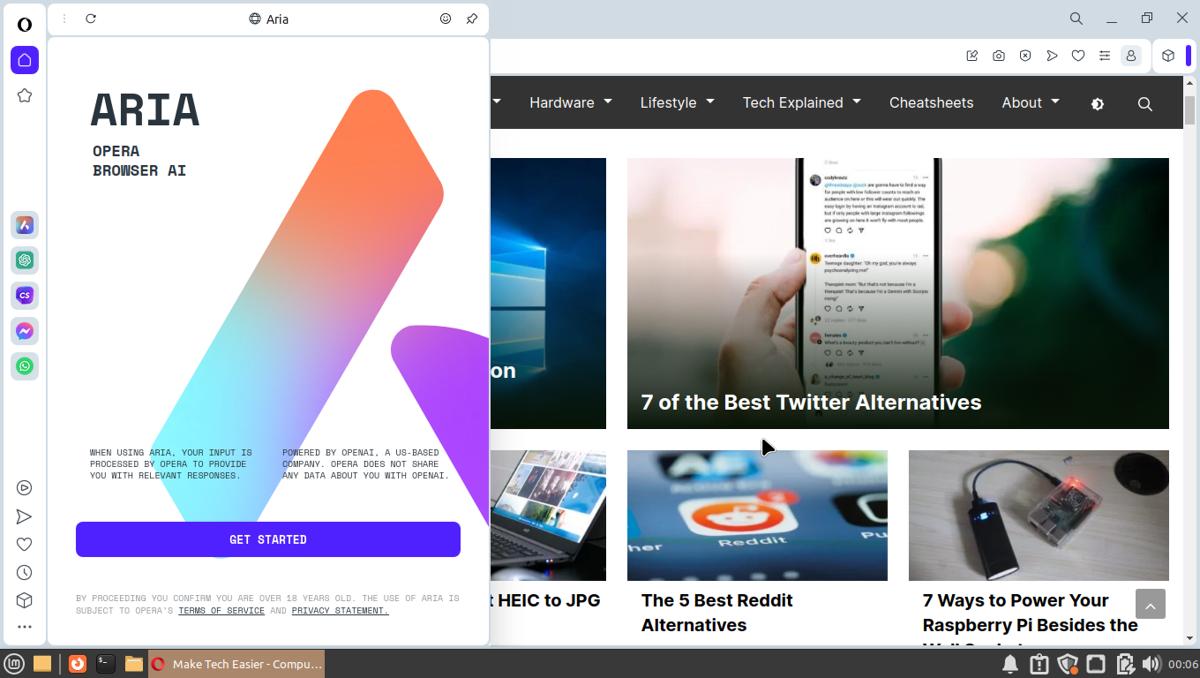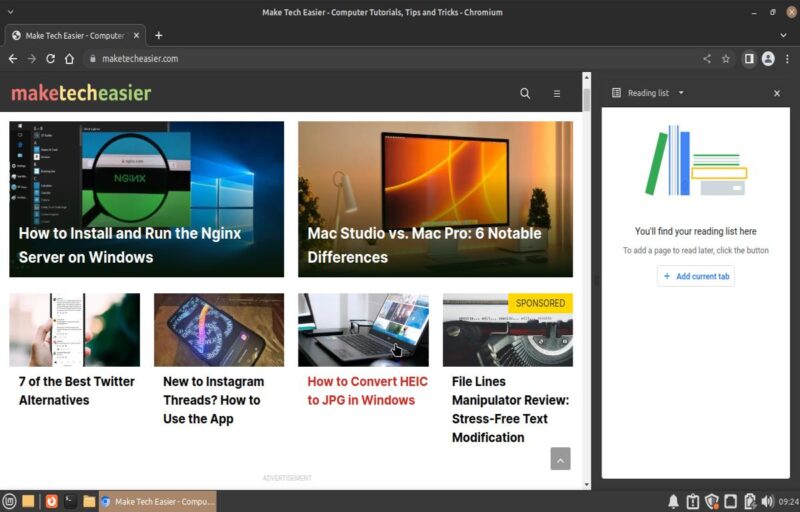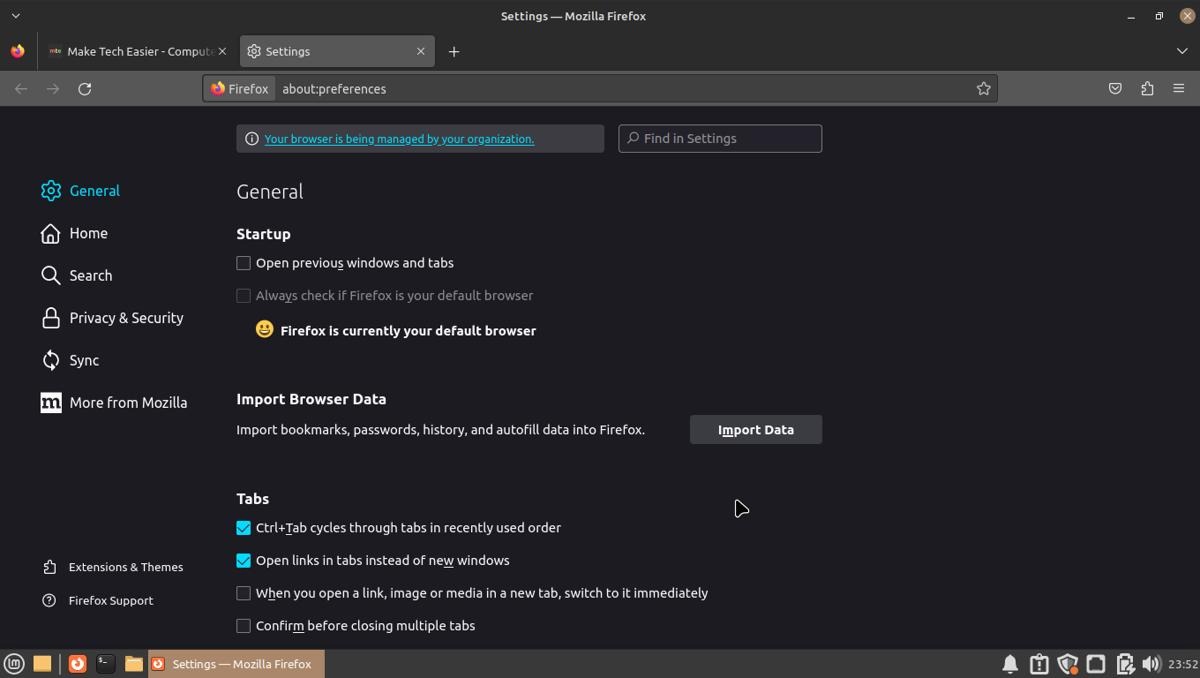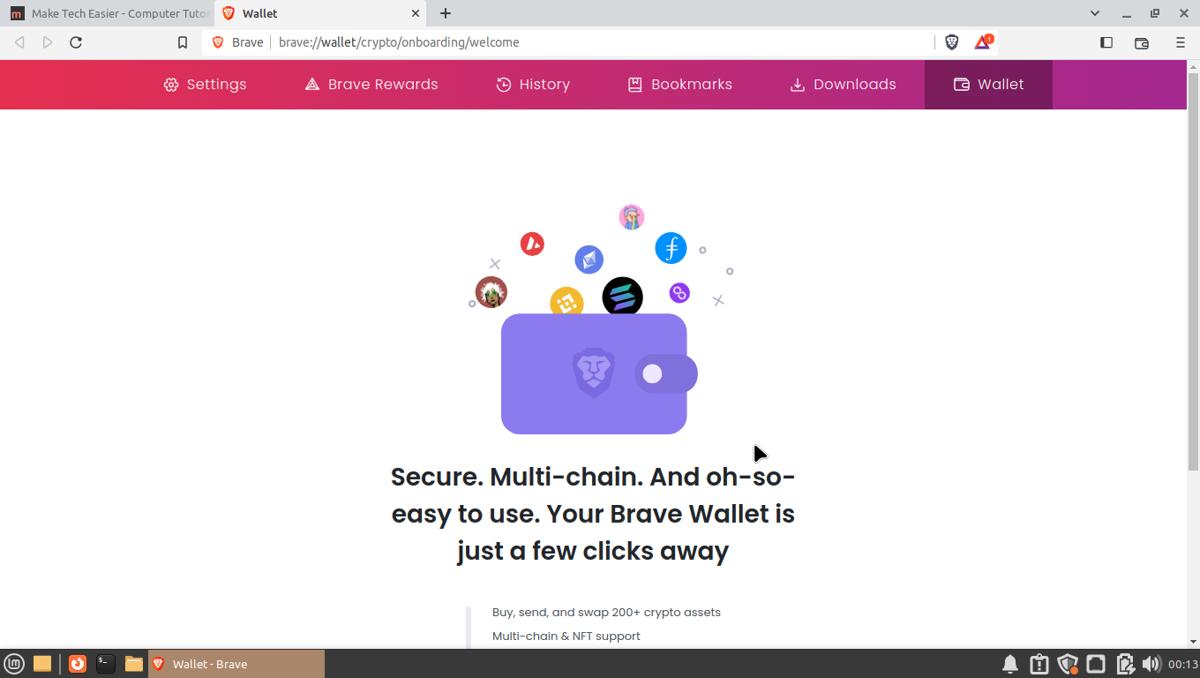
Be it for personalization, security, or any other way, Linux web browsers come as good as Linux distros do. Here are 11 of these, ready to bring you every single page that the internet has to offer!
1. Vivaldi – Best for Personalization
When it comes to personalization, Vivaldi has everything. For one, it lets you move where you want your tabs should go. You can choose the top bar, bottom bar, or even either left or right side! Better yet, it lets you do gestures with your own mouse, making it an even better choice for touch-enabled monitor setups.

Another good thing about Vivaldi is that it accepts typed-in user commands using Ctrl + E. It’s a bit similar to typing commands off the Linux Terminal but with suggestions and a dropdown list. You can even make new commands for it, including adding a chain of commands to do many things with just one input.
On the other hand, the extra buttons can feel overwhelming at first if you’ve only ever used Google Chrome or Microsoft Edge before. But it’s all customizable and removable, so you can just remove all the buttons and give yourself time to get used to all the extra functions.
2. Opera – Best AI Services Implementation
Opera isn’t one to stay sleeping when it comes to AI services – it’s got AI services built into it right from the get-go. It also has its own proprietary AI assistant named Aria. You can chat it up and ask it questions by clicking on the Aria logo in the sidebar. Alternatively, you can choose ChatGPT and ChatSonic to talk with – or do all three at the same time!

Opera runs quickly, with very low RAM usage while running multiple browser tabs. It even opens up quite fast compared to other browsers. In fact, there are not a lot of cons you can find on this browser, except perhaps not being able to move the tabs bar anywhere else despite its customizability. Besides that, it’s got everything you need in a tight, little package.
One more benefit you can have with Opera is that you can share your favorite videos and interesting webpages with the Pinboards function. This way, your friends who use Opera can view them on a single, easy-access page.
3. Google Chrome – Best Centralized Web Experience
Google Chrome helps gather all your accounts in one place by syncing your passwords across multiple browsers tied to one account. In fact, it even lets you use passwords for certain apps on your Android phone. Couple that with a clean interface for Google services and you’ve got yourself an all-in-one browser for most office and school tasks.

It does have one caveat, though. Google Chrome can be difficult to install. It is not available in most Linux repositories and needs to be installed manually. It only has installation packages in the .deb and .rpm format, so if your Linux distro doesn’t support any of the deb and rpm formats, you have to find your own way to install it.
The good thing is, Google Chrome opens up and loads pages as fast as the Windows version does.
4. Chromium – Like Chrome, but Open Source
Chromium would be the best for you if you liked Google Chrome but wanted to avoid the part where it collects user data. It’s a minimal version of Google Chrome designed for open-source development. There are a lot of other browsers built over this browser, but the vanilla Chromium will always be available for anyone who wants a basic one without all the bells and whistles.

Chromium also does away with all the other memory-intensive features that make Google Chrome slower. This is a double-edged sword since you will lose all the built-in integrations with Google services in exchange for a faster install. And it won’t even let you save much on download size with that.
On the other hand, you can easily install it using a package manager. And since it’s open source, tech-savvy users can edit the source code, itself to get an even more unique browser experience that no one else can ever make!
5. Firefox – Best for Non-stop Power Users
Firefox does not compromise when it comes to features and performance. It’s fast. It can run a few hundred tabs and it doesn’t care if you’re running a JavaScript-heavy website. Everything works flawlessly – and it even brings a bit of customization to the table.

With Firefox, you can run over a hundred tabs and it won’t crash on a decent computer. It’s good at managing that, consuming fewer resources compared to other browsers. It can even let you do multiple Picture-in-Picture modes with multiple tabs. That is, as long as you have enough screen space to keep them together.
It’s even better if you use incognito mode to run tabs since it lets you reopen them as long as you haven’t closed the incognito session. This makes it a good browser for doing research where you wouldn’t want to close certain tabs related to the thing you’re studying but you also wouldn’t read them until after you’re done reading something else.
6. Brave – Best Built-in Adblocker
Brave is one browser with a mission: to give you control over advertisements. It blocks all ads served to you without all the security that comes with a third-party adblocker. Plus, it gives you the option to view its own less-obstructive ads in exchange for cryptocurrency that you can give to your favorite content creators. Of course, you can always do away with that and just focus on the ad-free experience.

Brave is designed to have full support for Web 3.0. It has its own crypto wallet named Brave Wallet, which lets you use services that use BAT. Brave also has a paid VPN service, which works if you’re on Brave Premium.
It does have an over-reliance on crypto-based services, however. You can’t even sync your settings without setting up a Brave Wallet first. Although setting up a new wallet wouldn’t take too long; it’s just a bit of a hassle especially if you’re not that interested in crypto technology.
7. Tor – Best Untrackable Privacy
Tor stands for The Onion Router and it’s the only way to access an ever-growing private internet of web services with absolute privacy. It covers your tracks in layers upon layers of encryption, much like an onion sprouting from a bud. If you have ever heard of the Deep Web, this is what helps you access that without being tracked.

The only problem with Tor is that the privacy comes with a price – running the browser can take a bit of time. Setting up a connection to an onion node will take even longer. And since it’s used to jump from network to network like a VPN, browsing will also be slow.
On the other hand, the onion network that runs Tor’s services is free. It can even let you view sites and pages that are banned by your own ISP. It’s best known as a tool for whistleblowers to contact authorities without being tracked through their browsers.
Conclusion
There’s no such thing as one best browser that has everything. Although Opera comes close to that, there are other ways that other browsers do better. Like Firefox for heavy usage, or Tor for anonymity. The important thing is to know what you want and have fun trying out all these to see what’s best for what you need!
Image credit: Browser http man use computer by DepositPhotos
Our latest tutorials delivered straight to your inbox